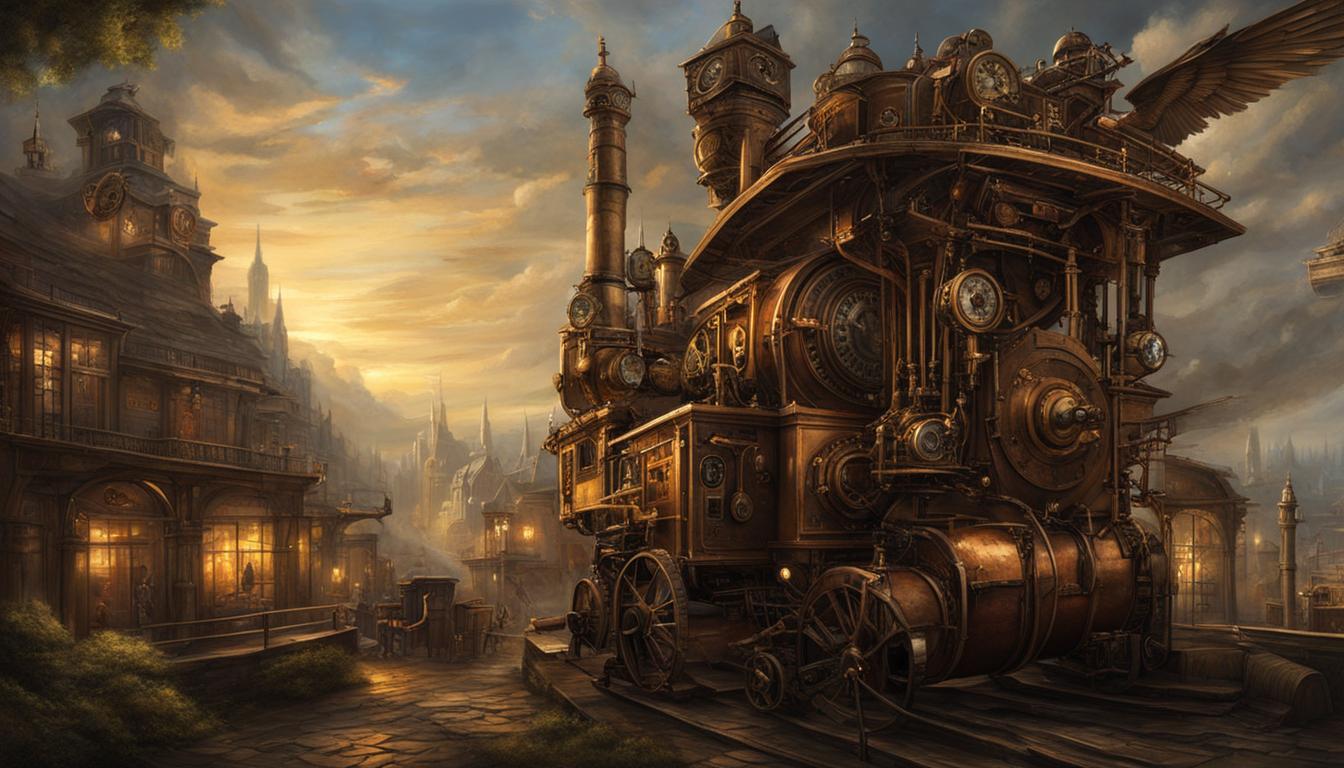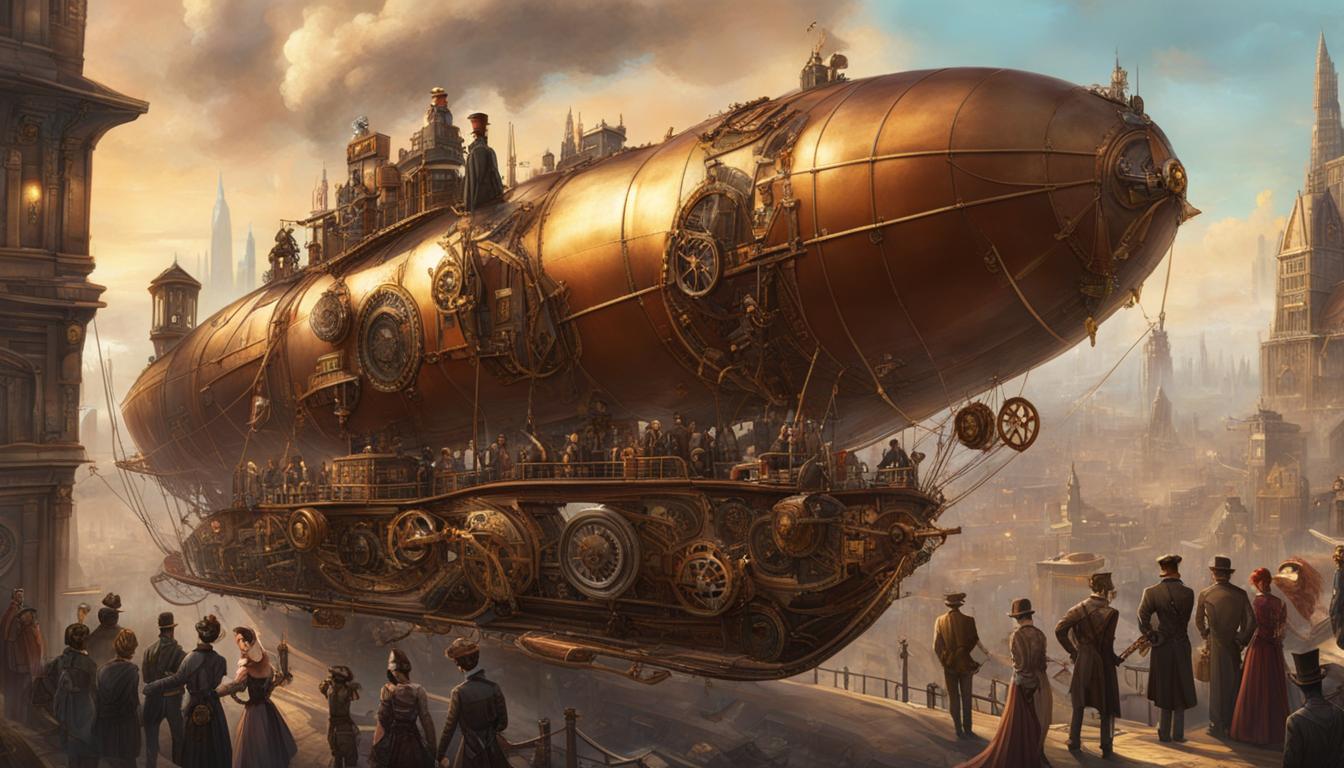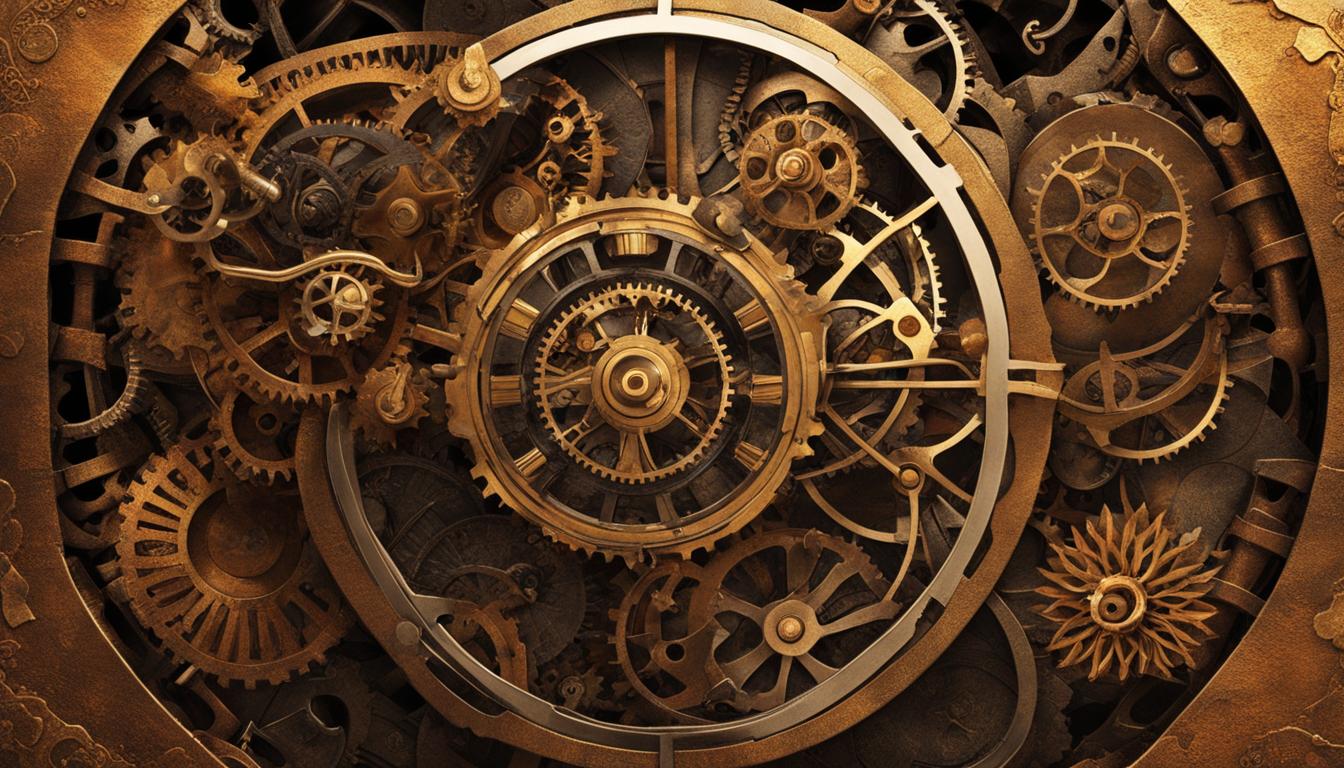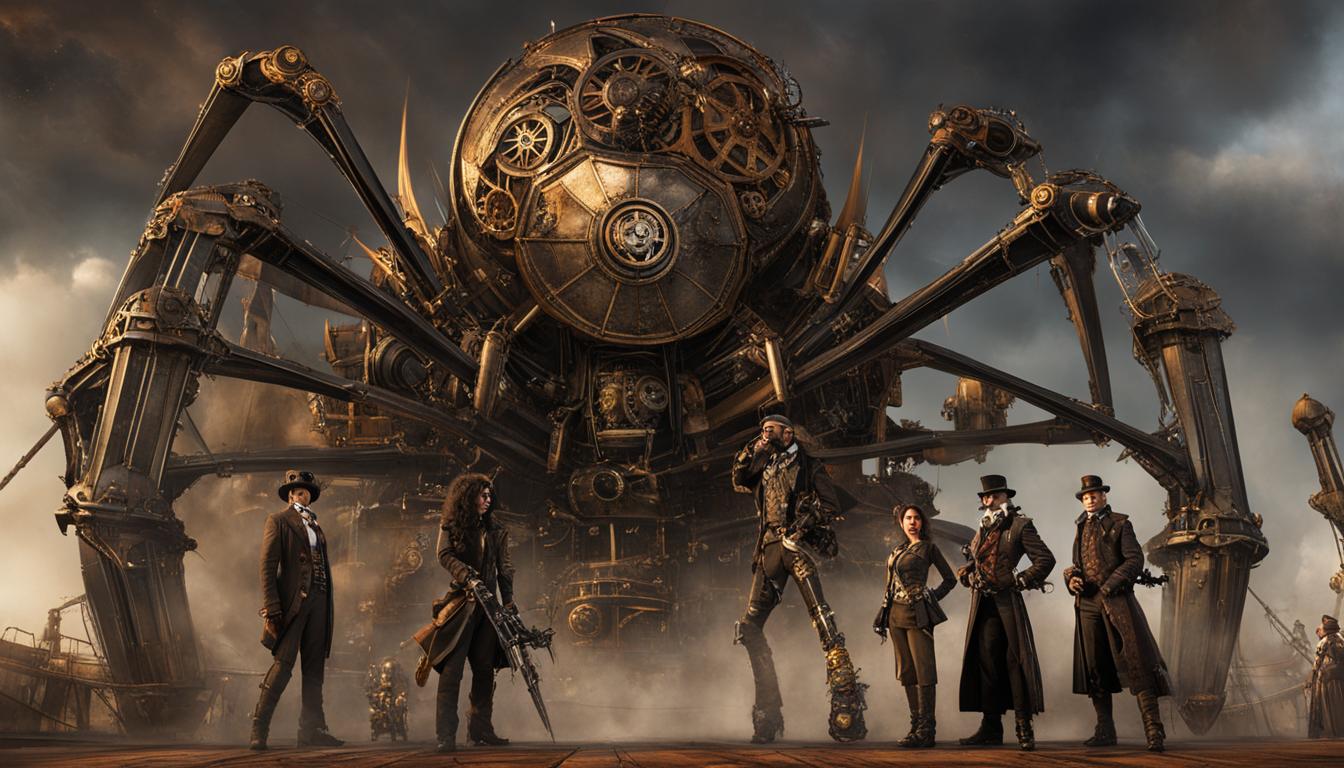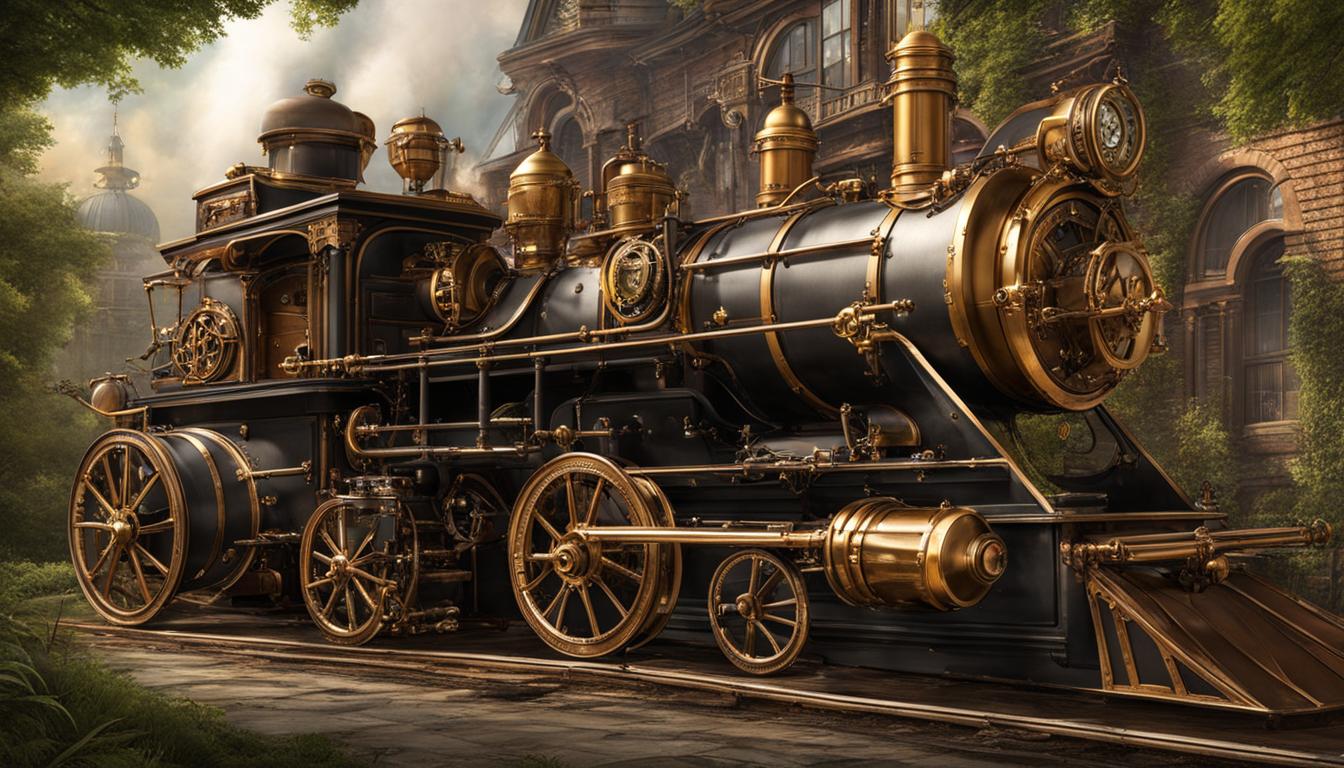Steampunk, a genre that defies the boundaries of time and reality, has captured the imaginations of readers and creators alike. With its retrofuturistic technology and Victorian-era aesthetics, steampunk has become a beloved subgenre of speculative fiction. In this article, we delve into the origin and evolution of steampunk, tracing its roots back to the speculative fiction literature that inspired it.
Key Takeaways:
- Steampunk is a subgenre of speculative fiction that incorporates retrofuturistic technology and aesthetics.
- It originated in the 1980s, coined by science fiction author K.W. Jeter, and has since grown into a distinct genre with its own cultural following.
- Steampunk has its roots in 19th-century science fiction literature, particularly the works of Jules Verne and H.G. Wells.
- The genre has evolved to include influences from various art forms, branching out from traditional sci-fi.
- Steampunk’s ties to influential authors, such as Michael Moorcock and Tim Powers, highlight its connection to the broader world of speculative fiction.
The Roots of Steampunk in Literature
Steampunk’s origins can be traced back to 19th-century science fiction literature, where classic works by authors like Jules Verne and H.G. Wells laid the foundation for the genre. These influential authors introduced themes of advanced technology, alternate realities, and fantastical inventions that have become central to steampunk storytelling.
In his novel “20,000 Leagues Under the Sea,” Jules Verne delved into the concept of underwater exploration and introduced readers to the iconic Nautilus, Captain Nemo’s steam-powered submarine. H.G. Wells, on the other hand, took readers on a journey through time with “The Time Machine,” creating a captivating blend of time travel and Victorian-era aesthetics.
Steampunk literature often incorporates Victorian sci-fi elements, such as airships, steam-powered machines, and retrofuturistic inventions. Verne and Wells’ imaginative stories not only introduced these fascinating concepts, but also influenced the writing style and aesthetic of steampunk. The rich world-building and attention to detail in their works continue to inspire contemporary steampunk authors, shaping the genre into what it is today.
Influences on Steampunk: Verne and Wells
Verne and Wells’ contributions to steampunk extend beyond their individual works. Their influence can be seen in the broader steampunk community, where enthusiasts celebrate and draw inspiration from these classic authors. From cosplay to art and literature, Verne and Wells’ legacy permeates the steampunk subculture and serves as a constant reminder of the genre’s roots in 19th-century science fiction.
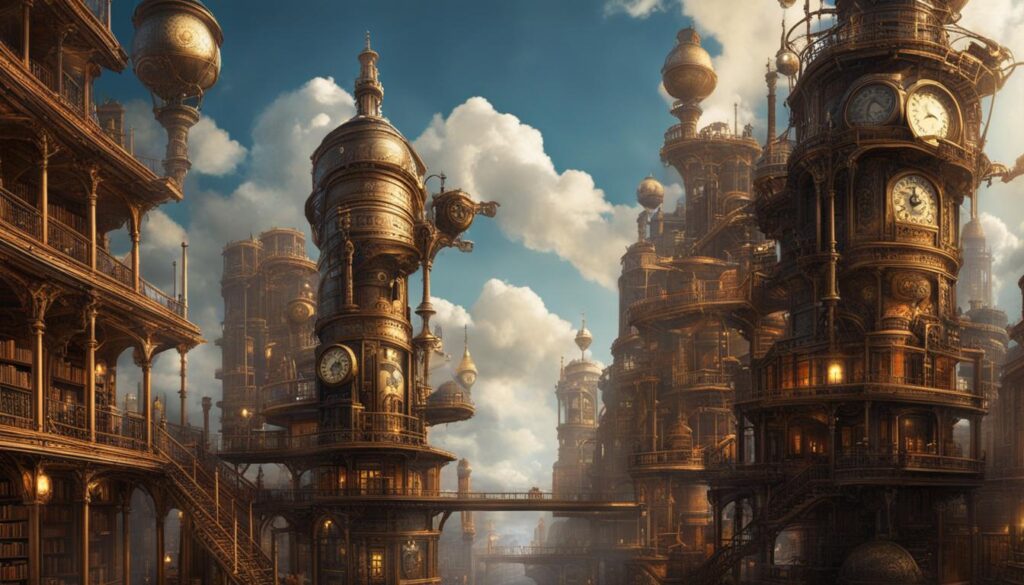
| Author | Notable Works |
|---|---|
| Jules Verne | “20,000 Leagues Under the Sea,” “Around the World in Eighty Days,” “Journey to the Center of the Earth” |
| H.G. Wells | “The Time Machine,” “The War of the Worlds,” “The Island of Doctor Moreau” |
Table: Notable Works by Jules Verne and H.G. Wells
The Evolution of Steampunk Culture
Steampunk has come a long way since its origins in traditional science fiction. What started as a genre that drew inspiration from classic literature has now evolved into a full-fledged subculture and cultural movement. Steampunk has branched out from its traditional sci-fi roots and embraced influences from various art forms, including fantasy, horror, and other branches of speculative fiction.
One of the most striking aspects of steampunk culture is its celebration of the aesthetics of the Victorian era. Enthusiasts of the genre often don elaborate costumes, complete with corsets, top hats, and goggles, to fully immerse themselves in the world of steampunk. But steampunk is not limited to fashion; it extends to other creative endeavors as well.
Steampunk conventions and events have become popular gathering places for enthusiasts to share their love for all things steampunk.
In addition to literature, steampunk has also made its mark in the fields of art and music. Many artists create steampunk-inspired artwork, showcasing mechanical contraptions, airships, and intricate clockwork designs. Musicians have also embraced the genre, incorporating elements of steampunk imagery and aesthetics into their performances.
The Steampunk Community
The steampunk subculture has formed a tight-knit community of like-minded individuals. They come together at conventions and events to exchange ideas, showcase their creations, and revel in all things steampunk. These gatherings provide a platform for enthusiasts to connect with one another and foster a sense of belonging within the steampunk community.
Within this community, many individuals enjoy creating their own steampunk-inspired inventions through DIY crafting. From modified clothing and accessories to functional gadgets and contraptions, steampunk enthusiasts channel their creativity and imagination into bringing their visions to life.
Overall, the evolution of steampunk culture is a testament to the genre’s enduring appeal and influence. From its humble beginnings in classic literature to its expansion into a rich and diverse subculture, steampunk continues to captivate the imaginations of people worldwide. Its historical roots, coupled with the influence of literature and art, have shaped a unique cultural movement that shows no signs of slowing down.
Steampunk’s Ties to Speculative Authors
Steampunk is a genre deeply rooted in speculative fiction, drawing inspiration from influential authors who have shaped its development. Alongside Jules Verne and H.G. Wells, whose works laid the foundation for steampunk, there are other notable authors who have made significant contributions to the genre.
In the realm of speculative fiction, Michael Moorcock stands out as one of the most influential authors with his “Nomad of the Time Streams” trilogy. Moorcock’s blending of Victorian-era settings, time travel, and fantastical elements has left a lasting impact on the steampunk genre. His works transport readers to intricate and imaginative worlds, which continue to inspire contemporary steampunk authors.
Another influential figure in steampunk literature is Tim Powers, known for his novel “The Anubis Gates.” Powers skillfully weaves together elements of historical fiction, fantasy, and horror, creating intricate and immersive narratives. His ability to combine supernatural elements with steampunk aesthetics has contributed to the genre’s expansion and cultural significance.
These influential authors, alongside Verne and Wells, have shaped the trajectory of steampunk by infusing it with elements of speculative fiction, fantasy, and horror. Their captivating storytelling and imaginative world-building have provided a rich foundation for steampunk authors to explore alternate pasts and futures, pushing the boundaries of the genre and captivating readers worldwide.
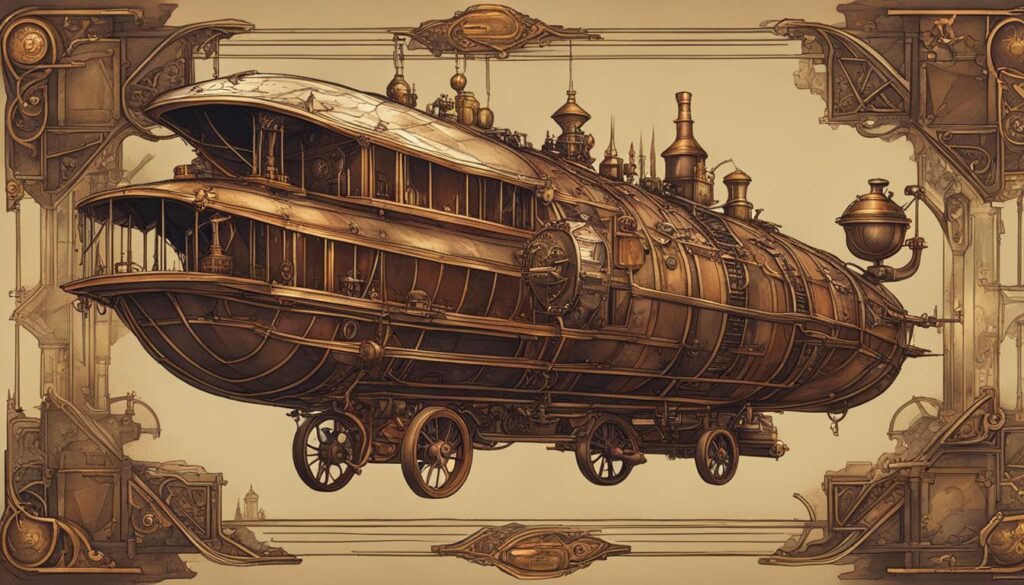
Notable Works by Influential Authors
| Author | Notable Work |
|---|---|
| Michael Moorcock | Nomad of the Time Streams |
| Tim Powers | The Anubis Gates |
| Jules Verne | 20,000 Leagues Under the Sea |
| H.G. Wells | The Time Machine |
Conclusion
From its humble beginnings as a term coined by K.W. Jeter in the 1980s, steampunk has grown into a cultural phenomenon with a significant impact on the speculative fiction genre. This unique subgenre, inspired by 19th-century science fiction literature and the aesthetics of the Victorian era, has captured the imaginations of enthusiasts worldwide.
Steampunk’s influence can be seen not only in literature but also in art, fashion, and music. It has expanded beyond its traditional sci-fi roots and embraced elements from fantasy and horror, creating a rich tapestry of storytelling and creative expression. The genre’s distinctive blend of retrofuturistic technology and Victorian charm has become a beloved hallmark of steampunk culture.
With its cultural significance and enduring popularity, steampunk has left an indelible mark on the speculative fiction community. It has inspired countless authors, artists, and enthusiasts to explore new horizons and reimagine the past with a fantastical twist. As the exploration of steampunk’s roots continues, it is clear that this genre will continue to shape and evolve the future of speculative fiction for years to come.
FAQ
What is steampunk?
Steampunk is a subgenre of science fiction that incorporates retrofuturistic technology and aesthetics inspired by 19th-century industrial steam-powered machinery.
When did steampunk originate?
Steampunk originated in the 1980s as a term coined by science fiction author K.W. Jeter, who was trying to find a general term for works that took place in a 19th-century setting and imitated conventions of Victorian speculative fiction.
What are the roots of steampunk in literature?
Steampunk draws inspiration from classic literature and authors such as Jules Verne and H.G. Wells, whose works introduced themes of advanced technology, alternate realities, and fantastical inventions that have become central to the steampunk genre.
Is steampunk only limited to literature?
No, steampunk has expanded to include influences from various art forms. It encompasses not only literature but also fashion, art, music, and even DIY crafting.
Who are some influential authors in the steampunk genre?
Authors like Jules Verne, H.G. Wells, Michael Moorcock, and Tim Powers have made significant contributions to the steampunk genre, blending elements of science fiction, fantasy, and horror in their works.
What impact has steampunk had on speculative fiction?
Steampunk has introduced a unique blend of retrofuturistic technology, Victorian-era aesthetics, and imaginative storytelling into popular culture. It has inspired countless works of literature, art, and other creative endeavors and continues to shape the future of speculative fiction.
Source Links
- https://en.wikipedia.org/wiki/Steampunk
- https://oxfordre.com/literature/literature/view/10.1093/acrefore/9780190201098.001.0001/acrefore-9780190201098-e-78?p=emailAW1T/todk1PII&d=/10.1093/acrefore/9780190201098.001.0001/acrefore-9780190201098-e-78
- https://canvas.eee.uci.edu/courses/35146/files/14592832/download?download_frd=1

